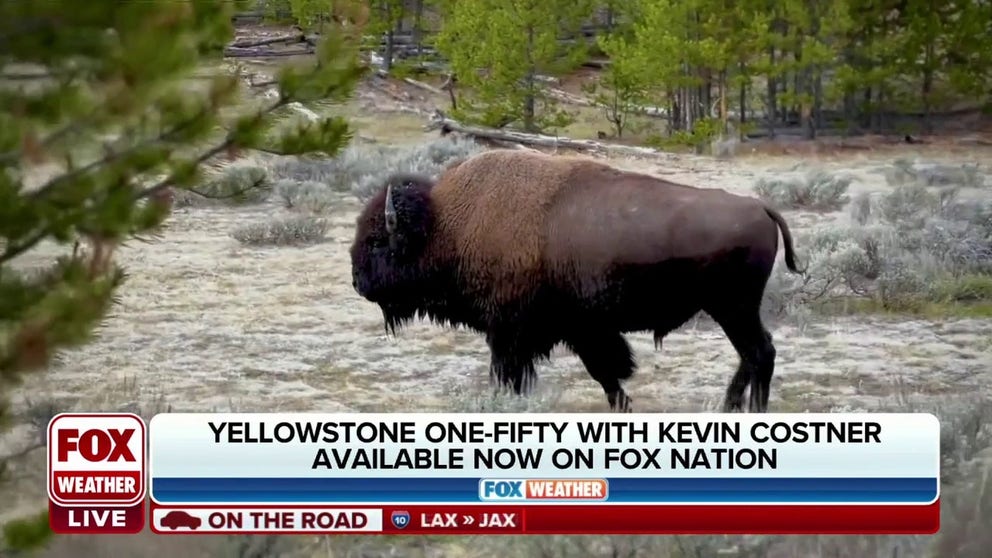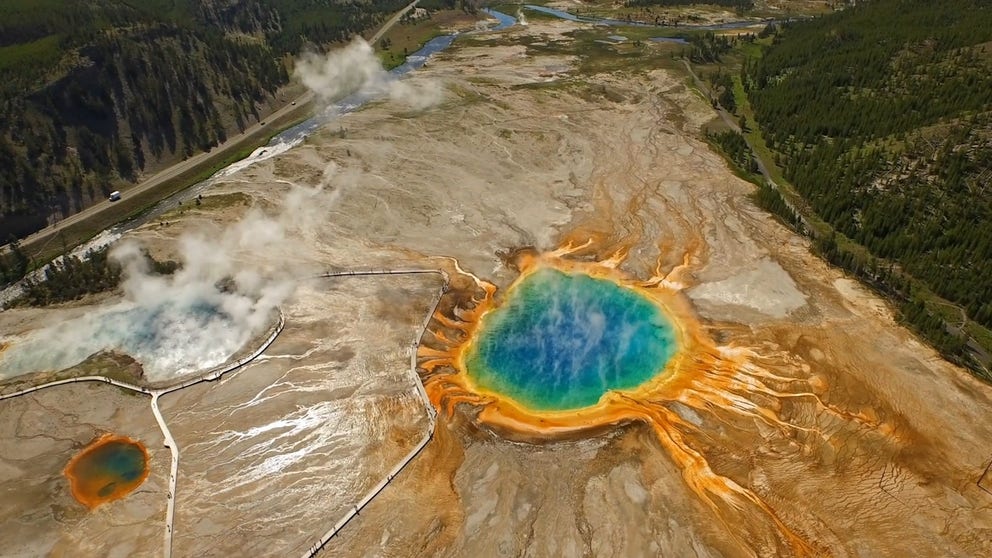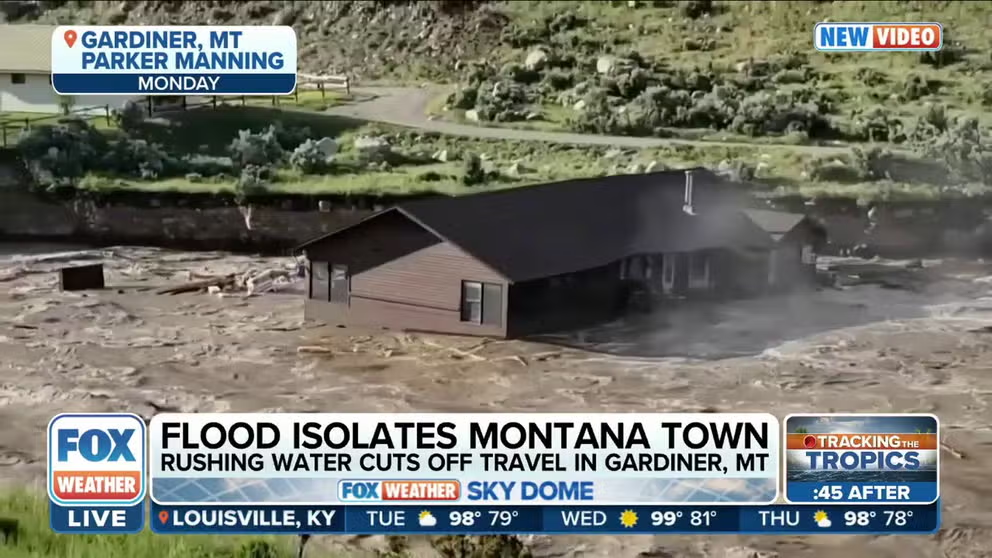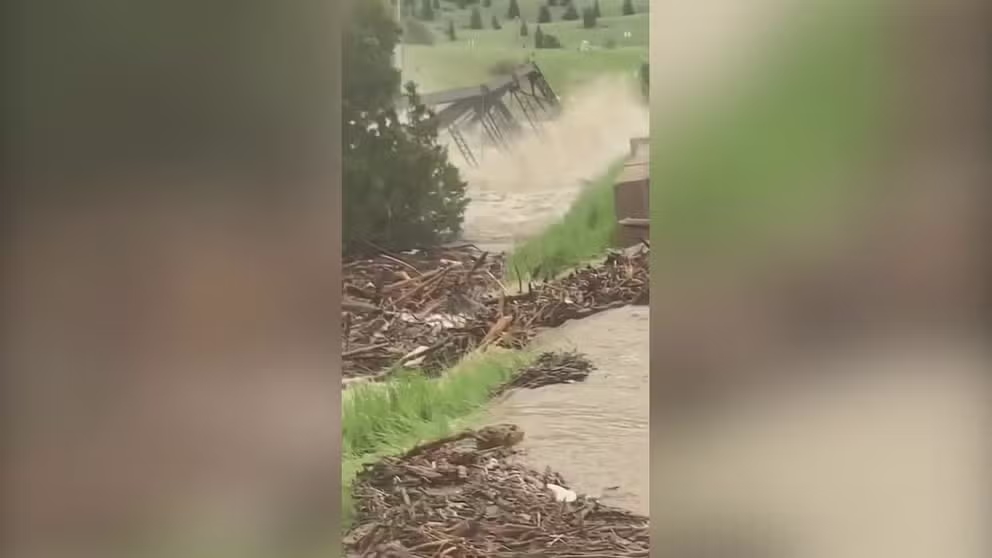A green Yellowstone keeps the local economies in the black
The 4.9 million park visitors in 2021 spent $630 million dollars in gateway communities, sadly missed after spring floods.
Millions flock to Yellowstone for the nature
Ecotourism dropped 90% in Yellowstone after spring flooding took out roads after a record 5 million visited in 2021. America's first national park is back in business.
YELLOWSTONE NATIONAL PARK – Preserving nature keeps Yellowstone National Park and its neighbors green in more ways than one. The millions of ecotourists flocking to make memories in Yellowstone mean big business and cash.
Keeping industry out of the 3,472 square miles across Wyoming, Montana and Idaho brought in $630 million to gateway neighborhoods in 2021, estimated the National Park Service and U.S. Geological Survey.
7 THINGS TO KNOW ABOUT YELLOWSTONE NATIONAL PARK
Yellowstone National Park
A look at the United States' first National Park: Yellowstone.
The 4.9 million visitors to Yellowstone National Park supported 8,740 jobs. That totaled $294 million in labor income. The Visitor Spending Effects Report state that the spending added another $456 million in value to the area and resulted in $834 million in economic output to the gateway economies.
MONTANA'S EXTREME WEATHER HELPS SHAPE CHARACTER OF ICONIC TREASURE STATE
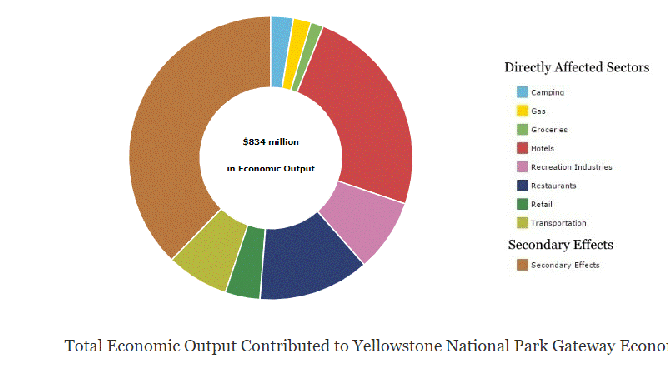
In 2021, the 4.9 million visitors to Yellowstone National Park created $834 in economic output locally.
(National Park Service and U.S. Geological Survey / FOX Weather)
"Yellowstone is the golden goose," said Richard Parks who owns Parks Fly Shop.
This spring and summer, Parks and his neighbors in were reminded exactly how much the local economy depends on Yellowstone’s Old Faithful, pristine streams teeming with fish and bugling elk. Record June floods wiped out roads and closed all entrances to the park. Thousands of visitors were evacuated on national television.
Historic flooding at Yellowstone National Park isolates Montana town
Angela Tempo, a guide for Montana Yellowstone Tours, says rushing floodwater has cut off travel in Gardiner, Montana.
"Our summer (was) canceled. Literally, a tsunami of cancelations following the flood water," describes Parks of Gardiner, Montana.
For over four months, Yellowstone's gates were locked. Crews worked 7 days a week to rebuild bridges, roads and housing in and around the park.
"Business was down anywhere from 60 to 90%. And that's for those that stayed open," said Bill Berg, a Park County, Montana Commissioner. "And there were some that just saw the writing on the wall and just locked up and cut their losses."
The over $60 million in infrastructure damage did not come as a surprise to Superintendent of Yellowstone Cam Sholly.
Montana bridge swept away as severe flooding hits Yellowstone National Park
A Montana bridge was swept away on Monday as severe flooding hits Yellowstone National Park.
"Most of the infrastructure in U.S. National Parks was built in the twenties, the thirties, the forties, really, before climate change was really part of the conversation," Sholly said. "And so as we see these climate events, whether they be hurricanes or fires or floods, impact our infrastructure, in some ways it's an opportunity."
He and other officials embraced the opportunity and re-engineered the roads to withstand more traffic and more of Mother Nature's wrath. One highway in particular is now a two-lane paved roadway after the old, one-lane road dating back to 1879 washed-away.
Congress designated the area a protected National Park, the very first, in 1872. The United Nations echoed the need to preserve the biological diversity and declared the park a Biosphere Reserve, one of the first in the world, in 1976.
‘YELLOWSTONE IS AN AMAZING PLACE’: AMERICA'S OLDEST NATIONAL PARK CELEBRATES 150 YEARS
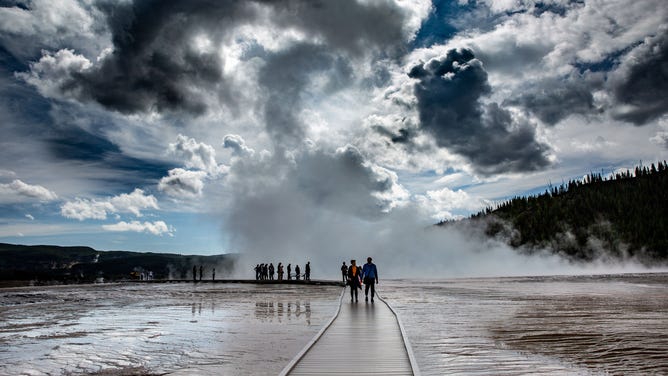
Visitors walk along a boardwalk at the iconic Grand Prismatic Spring in Yellowstone National Park. The geyser sits atop an active volcano caldera.
(George Rose / Getty Images)
The U.N. then designated Yellowstone a UN Educational, Scientific and Cultural Organization (UNESCO) World Heritage Site in 1978. Yellowstone was the first in the U.S.
"There are some places that are so unique and so special that we need to set them aside and preserve them for the future," said Rich Jehle, Yellowstone's Supervisory Park Ranger. "And not just necessarily intact, exactly like they were at some point in time, but preserving the processes, the natural way things interact, the way the ecosystem works, the way that wildlife interacts with the geology.
Residents and conservationists agree that the one-of-its-kind ecosystem, geology and landscape should be saved, studied and open for everyone to learn from and enjoy. Locals in the gateway neighborhoods are thankful that visitors' spending allows residents to enjoy the beauty year round.
BISON GORING AT YELLOWSTONE PROMPTS SAFETY REMINDER FROM PARK RANGERS
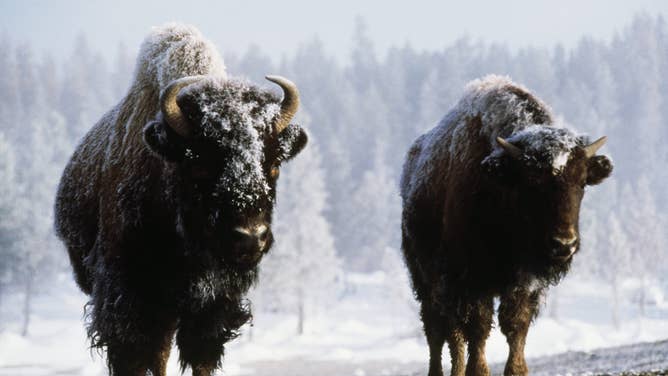
Bison in a snowy Yellowstone National Park in Wyoming.
(DeAgostini / Getty Images)
"Yellowstone is such a marvel, and we're so lucky to be living in this area. You really just don't get over how amazing those geological pictures are and knowing what the earth can do," said Jessica Olson, a Conservationist with the Gallatin River Task Force.
"And just from a tourism standpoint, that's what brings in so much of the economy around here," Olson continued. "This area really relies on Yellowstone from that point of view."
Most roads in Yellowstone are currently closed to prepare for winter activities like snowmobiling. The park opens for the winter season on December 15. The North Entrance is open year round.
